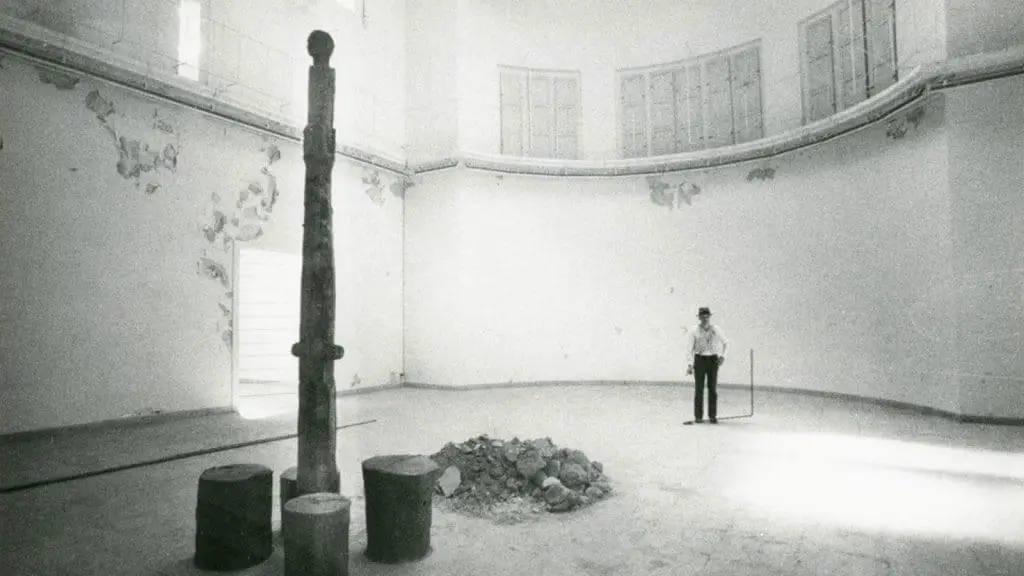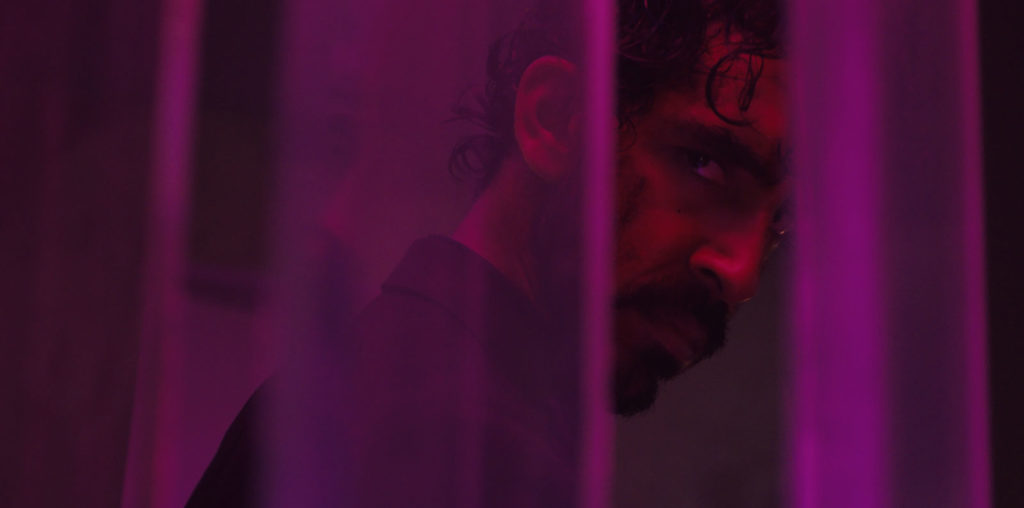
The first works by video artist Ryan Trecartin which I had a chance to see were from the “I-Be Area” series (2007), and my reaction was one of almost unmixed horror. A cacophonous onslaught on nonstop images and sounds, Trecartin’s work fully embodied everything I find terrifying and unpleasant about the younger generation: narcissism, an obsession with surfaces and appearances, the reduction of inner life to series of reified “moods” and “feelings,” an obliviousness to the inner experience of others, and an addiction to fractured states of attention and constant outside stimulus.
Actually, it is wrong to say I hated Trecartin’s work on first viewing. I immediately loved the dialogue and his ear for language:
“I hear a mer-person swimming upstream with a major design flaw.”
“She had the nerve to try and talk back about my pregnancy style. And how I should copyright my belly format before some hard worker figures out the code.”
“Don’t throw your victim points at me; I don’t recognize discounts”
Trecartin’s dialogue is a mashup language, a salad of digerati buzzwords, compulsively trying to shift the paradigm and think outside the box every 4 seconds. It represents the consciousness of people who think in online formats, and I was immediately enthralled by his ability to slice and dice this language into a kind of delirious poetry. I also enjoyed the energy and intensity of the work, and the originality of the style. It’s just that the experience scared me to death.
It’s ironic that, in my 50s, I’ve come to detest these new developments in our culture. As a teenager first forming my artistic ideals, my artistic heroes, avant-garde theater artists like Elizabeth LeCompte and Richard Foreman, longed to create, in their work, a world of non-linear experience, where multiple, overlapping texts would broaden consciousness, and liberate us from the narrative strictures then prevalent in theater and in film. (LeCompte is now a big fan of Trecartin’s work.) Little did I know that, thanks to the internet and cell phones, 40 years later the world of intertextuality, where people switch nonlinearly between multiple texts all day long, would become the normal world that Americans live in, and that I would hate everything about it.
Although I still love watching films and plays which express the multi-level, nonlinear nature of consciousness, it turns out that in my personal relations with actual people, the thing I value most is sophisticated, sensitive communication skills. I love talking to people who think about what they are saying, and who are also aware of my state of mind when they talk to me, and try to phrase things in a way that will enhance our connection. I love people who listen, and people who can concentrate well for long periods of time. I love people who are perceptive enough to see beyond the external details of things people say and imagine the subjective experiences behind them. But contemporary life, where people communicate not to other people but to an anonymous unseen mass, and the complexity of human experience is reduced to what can be reproduced quickly and digitally, has almost complete removed these qualities from daily interactions. As we are bombarded by more and more messages, the quality of the communication seems to dwindle. I live in horror of becoming an elderly man in a world overrun by narcissistic zombies, texting while listening to music and surfing the net. I try to protect myself by sticking more with people my own age, and with those younger people I meet who haven’t succumbed to the dominant trends.
Reading online comments written by young people, I am often struck by the strong animosity the younger generation feels for older people nowadays. It is as if they can’t wait for us all do die and leave them alone. And I can understand where this animosity comes from. We have handed them a ruined world, with a ruined economy, ruined environment, and shattered social structures, and said to them, in effect: “Here. It’s yours. Go live in it. Enjoy.” No wonder they resent us. And, as the beginning of this essay makes clear, the animosity is often mutual.
Perhaps what I was longing for was a clear moral stance. Shouldn’t Trecartin embed some signal within the work that he is aware of how awful the world he’s depicting is? But Trecartin refuses to tell the viewer what to think. He forces us to deal with our own reactions. He follows the dictum of Lytton Strachey: “Je n’impose rien; je ne propose rien: j’expose.”
Furthermore, as a younger artist, Trecartin clearly doesn’t have the luxury of rejecting the current paradigm entirely, the way us outmoded old fogies can. We’ll be out of here soon; we don’t have to worry about it. The new digital paradigm is Trecartin’s world. He has to spend the rest of his life in it. No matter how ambivalently he feels about it, if he can’t find a way to make it dance and sing, to find the ecstasy in the cacophony, then he’s going to have a miserable time. It’s the only reasonable stance a creative person can take.
Looking at his newer work, such as “Roamie View : History Enhancement (Re’Search Wait’S)” (2010), I find that my attitude has completely changed. Now I love every second of his work. This is partly because the work itself has grown more sophisticated and more technically adept, but mostly it is because my way of reading the work has changed. I’ve adapted. Trecartin has taught me a new way of seeing and hearing.
I am now able to perceive that I needn’t have fretted about finding a moral stance embedded in the work. The characters in “Roamie” are obvious caricatures, with ridiculous mannerisms and ideas. The makeup and costumes turn the characters into clowns. Their voices are pitch shifted upwards to the tone of mechanized dolls. For example, look at JJ, who in the video’s opening monologue says that he wants to make a work of art by re-editing the Constitution so that every reference to “God” is replaced with “the Internet,” and then playing it over a house beat. Could there be a clearer, or funnier satire of our world, where digital tools make it so easy to alter documents that people feel they are “making art” simply by playing simplistic games with their software? But, at this point, I’ve grown comfortable with my own reaction to the characters and mindset depicted in this work. I no longer need the artist to hold my hand and tell me he knows how painful it all is.
Trecartin’s work has always referenced the look and feel of YouTube video. The control buttons of online video players are constantly splashed over his images, and his work uses the handheld camerawork, built-in mics, and the homemade aesthetic of teenagers turning their lives into TV programs. In Trecartin’s world, everyone is webcasting from their own channel 24/7, even in ordinary conversation. “This is my world; you’re just in it” says one character. No one listens to anyone else, no one considers the individual consciousness of the person they are addressing. Instead, everyone broadcasts their interior monologue to an anonymous, generalized public, in an everlasting quest to strengthen and define their personal brand.
Trecartin’s work is exhibited both as installations in galleries and museums, and also online, but I much prefer watching it online, where it is obviously more at home. In fact, he may be the only artist whose work actually looks better on a home computer. Paradoxically, you aren’t tempted to click away while watching Trecartin online, because his channel surfing style does all of the clicking for you.
In his earlier work, however, the amateurish look of his cuts, mattes, and transitions indicated that not only was he referencing amateur videos, his own actual video skills were unformed. In “Roamie” all this has changed. His handling of the video collage techniques is much more sophisticated, and it is now easy to see what was hidden before: how fine his artistic sensibility is. His sense of color, form, and rhythm are all superb. It is much more satisfying to watch skillful renditions of “amateur video” than it is to watch actual amateur videos. Trecartin’s artistic skill is the embedded moral stance in the work. His collaboration with set designer Lizzie Fitch also strengthens the visual power of “Roamie.”
The gender politics of “Roamie” are very specific: girls and gay men dress in elaborate costumes and makeup and are wildly performative. Heterosexual boys, on the other hand, are relatively slow and stupid and wear ordinary kid’s clothes, but they are cute and can play instruments. As a gay male viewer, I found that Trecartin’s queer sensibility gives me one of the easiest points of entry to his work. I know this world of feminine performance and masculine objects very well.
Although I’ve changed from being anti-Trecartin to being a major fan, it doesn’t mean that I’ve suddenly embraced the new digital culture. I still don’t have a cell phone or a Facebook page, despite the fact that most people regard this as incomprehensible. But, in learning how to get intense pleasure from watching his work, I’ve at least learned how to stop being scared of my own fear of our new culture. The world in Trecartin’s videos may not be my idea of utopia, but that doesn’t mean it is devoid of beauty, meaning, or its own peculiar music. Ryan Trecartin is the kind of artist who opens a completely new window onto the world, then teaches us how to look through that window. It’s a spectacular gift to offer.


